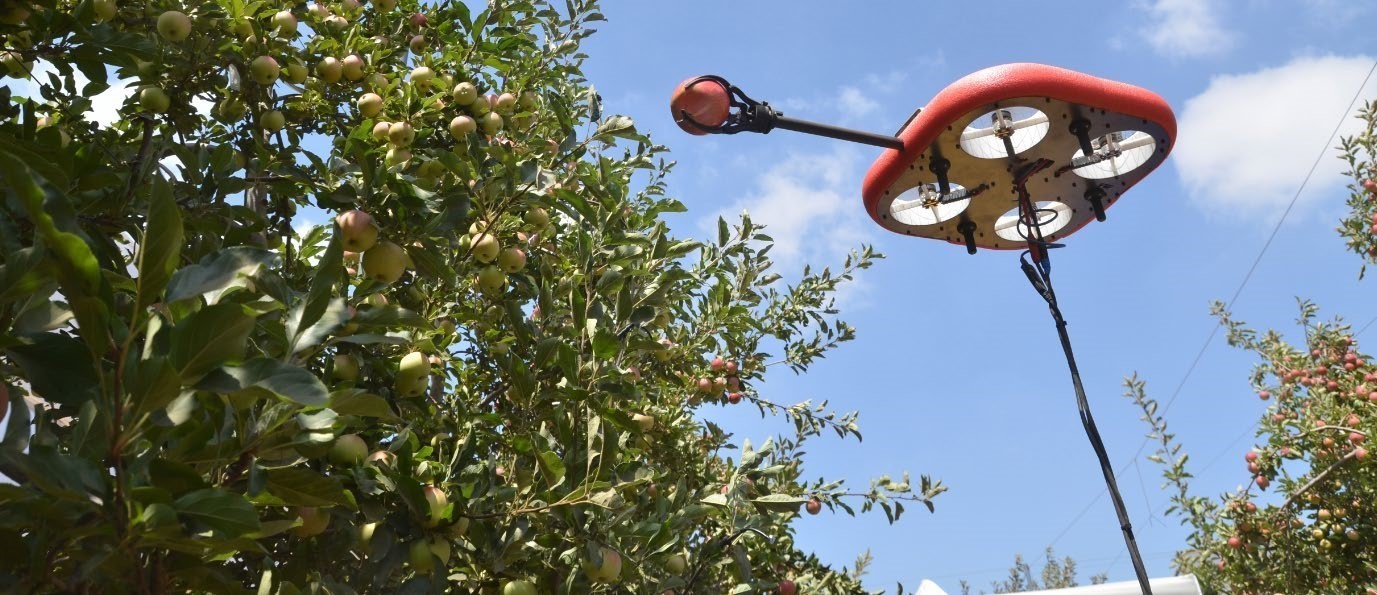



Article by: Hari Yellina
Winter has arrived, and the apples in Ardmona have been harvested for the year, with the exception of one row set aside for Eve. Eve is a fruit-picking robot prototype developed by Ripe Robotics over the course of three years. As the horticulture sector struggles to find human labour, Eve’s CEO and co-founder Hunter Jay stated, “There are a lot of eyes on Eve right now.” “Everyone seems to want us to succeed,” Mr Jay added. “Growers, engineers, and the government all want to ensure that they have food security and that we can harvest food reliably.” “We’re in a supportive environment, so it’s a technical challenge, but it’s a good one.”
The robotics team won a $570,000 grant from the federal government earlier this year to help them commercialise their technology. Mr Jay claims that with the help of more than $600,000 in private funding, they were able to finish the equivalent of two years’ worth of work in just six months. “I believe we had a total of $120,000 for the first two years, including our pay and the purchase of the hardware,” he stated. “Now that we have four people working on it, it’s moving a lot faster.”For the first time this season, Eve is being tested in the orchard rows so that its developers may address any technological concerns.
Mr. Jay estimates that the company will be ready to send robot pickers to operate in orchards as early as the 2023 harvest. “By next season, we hope to have two more machines constructed and functioning, collecting fruit almost entirely by themselves,” Mr Jay said. “I’m confident that by next season, we’ll be able to fill a bin on our own. “Hopefully, we’ll be able to do it with oranges in just two months. “There are a few snags. Attempting to autonomously pick fruit is a difficult task, but we’re making fantastic progress.” Andrew McNab, a fourth-generation fruit grower, has agreed to have Ripe Robotics pick his fruit, with the company based on his property.
For more than a decade, Mr. McNab said, sourcing labour has been a concern for the horticultural business. “It started to get harder around 10 or 12 years ago with government changes and work-for-the-dole-type programmes,” he said. “At the end of the day, we want individuals who want to be here rather than people who are forced to be here.” During the epidemic, the labour crisis in agriculture was highlighted, and Mr McNab stated that long-term solutions are required. “For the past few years, we’ve been fortunate to have Pacific islanders.” Mr McNab said, “We had to put in a lot of effort to get them on our property.” “I believe the robot is the way of the future.” We’re definitely growing our crop to help with harvesting and picking, but also for something robotic.”
The Fair Work Commission determined in 2021 that workers who are paid on a piece rate must be paid a minimum wage of $25.41 per hour. Mr McNab said that he was first concerned about the concept. “We wouldn’t be able to exist if we had employees who weren’t competent at picking; it would be too expensive on an hourly rate,” he said. “There will undoubtedly be a cost associated with the robot.” We are, however, doing it at a higher cost at the present. “Wages are steadily rising, and people don’t want to pick fruit.” “Technology is now a big element of fruit production, and we’re not afraid of it.” “We’re hoping for a low-cost solution to a huge problem we’re encountering.”